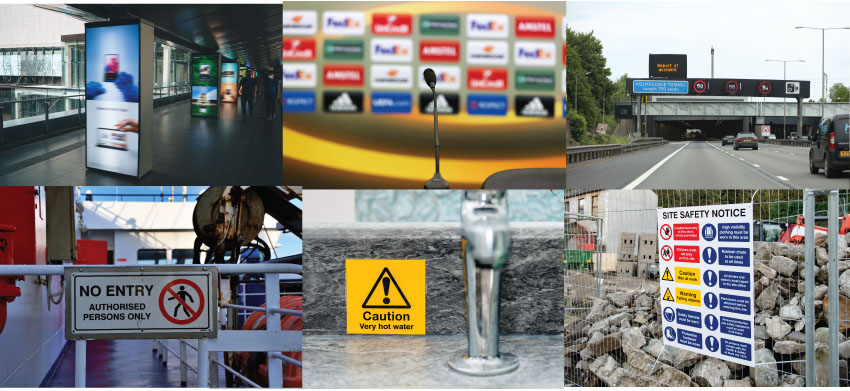
Whether highlighting the need for Personal Protective Equipment (PPE) or indicating fire assembly points, there’s no denying the importance of safety signs. However, there is a debate between digital signage vs traditional signage, and which is best suited to such purposes. We’ll look at the pros and cons of digital signage vs traditional signage in this blog, discussing the factors that businesses should consider before investing.
Traditional Safety Signs
Label Source offers a variety of traditional safety signs, suitable for indoor and outdoor use. Manufactured in accordance with relevant regulations, such safety signs can be placed for compliance with UK, EU, and international safety legislation, and can be universally understood with recognised symbols and instructions such as no smoking and no entry. Besides being cheaper than the digital alternatives, traditional safety signs don’t have to be plugged into power sources.
Other advantages of traditional signage include:
- Flexibility in terms of placement, as there’s no need for a power connection
- Continuous display of safety messages
- Ease of installation
Of course, there are some downsides associated with traditional static signage. Typically designed for a single purpose, these signs are limited when it comes to customisation. Featuring colourful moving graphics, digital signs also offer greater levels of engagement and interactivity. However, there’s a greater risk of people missing or overlooking static signs. This will be more of an issue if the traditional signs are subject to damage and deterioration.
Digital Safety Signs
As mentioned in our blog on the future of signs, grounded road and projected safety lines are among the latest digital developments designed to keep people safe. The different types of digital signage, meaning everything from liquid crystal display (LCD) monitors to light-emitting diode (LED) walls, can also be used to display customer updates and announcements. The dynamic content can be updated with relative ease, alerting people to various events. Some businesses even opt for installing interactive digital signs for increased customer engagement.
Other types of digital signage examples include:
- Information kiosks
- Digital menu boards
- AR window displays
- Digital advertising boards
Despite the range of benefits, some businesses are put off by the relatively high cost of digital signage. A digital window display can be expected to cost upwards of £1,000. Plus, there are the added costs of repair and maintenance needed to keep these types of digital signage running. As a contrast, one of Label Source’s hazard warning signs can be purchased for as little as £2.95.
Besides the expense, digital signage comes with these drawbacks:
- Dependence on a reliable power supply and technology connection
- Time needed to learn how to use and maintain such signage
- Potentially high cost of repairs in the event of damage caused by tampering or environmental factors.
Investment Considerations
Digital signs have to be continually connected with power sources. This is a particularly important consideration when it comes to the display of safety messages; it’s worth thinking about what might happen in the event of a power outage, with such potentially life-changing messages not being seen. This could also be the case if the internet connection is lost or content management software malfunctions.
Of course, digital signs may do an excellent job of catching the eye and communicating vital safety messages. However, such benefits should be weighed against the costs in comparison with traditional signage. Besides being designed for durability, the types of static safety signs available from Label Source are very easy to understand. Made from high quality recyclable materials, traditional signs are also the recommended choice for the environment.
The Label Source Recommendation
With such a range of pros and cons, it’s worth carefully considering your business needs before making your choice of digital signage vs traditional signage. It might even be that you’re best off taking a hybrid approach, combining the purchase of traditional safety signs and flashy promotional screens.
If you want to discuss your options then go ahead and get in touch with Label Source.